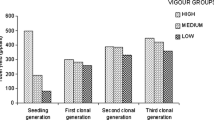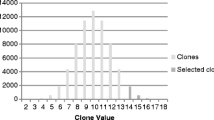A potato breeding strategy is presented which avoids the common but ineffective practice of intense early-generation visual selection between seedlings in a glasshouse and spaced plants at a seed site. Once pair crosses have been made, progeny tests are used to discard whole progenies before starting conventional within-progeny selection at the unreplicated small-plot stage. Clones are also visually selected from the best progenies for use as parents in the next cycle of crosses whilst they are multiplied to provide enough tubers for assessment of their yield and quality. Mid-parent values, as well as progeny tests, are then used to select between the resultant crosses. Material from other breeding programmes can be included in the parental assessments and used in the next cycle of crosses if superior. Finally, in seeking new cultivars, the number of clones on which to practise selection is increased by sowing more true seed of the best progenies, but without selection until the small-plot stage. Traits considered are resistance to late blight [Phytophthora infestans (Mont.) de Bary] and to the white potato cyst nematode [Globodera pallida (Stone)], fry colour and tuber yield and appearance, as visually assessed by breeders. The theoretical superiority of the strategy for seeking new cultivars lies in being able to practise between-cross selection for a number of economically important traits within 1 or 2 years of making crosses, something that is not possible on individuals as seedlings in the glasshouse or spaced plants at the seed site. This also means that full-sib family selection can be operated on a 3-year cycle, an improvement on current practice of clonal selection on what is often at least a nine-year cycle. New cultivars can be sought with more confidence from the best progenies in each cycle, and modern methods of rapid multiplication used to reduce the number of clonal generations required to find the best clones.
Similar content being viewed by others
Author information
Authors and Affiliations
Additional information
Electronic Publication
Rights and permissions
About this article
Cite this article
Bradshaw, J., Dale, M. & Mackay, G. Use of mid-parent values and progeny tests to increase the efficiency of potato breeding for combined processing quality and disease and pest resistance. Theor Appl Genet 107, 36–42 (2003). https://doi.org/10.1007/s00122-003-1219-y
Received:
Accepted:
Issue Date:
DOI: https://doi.org/10.1007/s00122-003-1219-y




